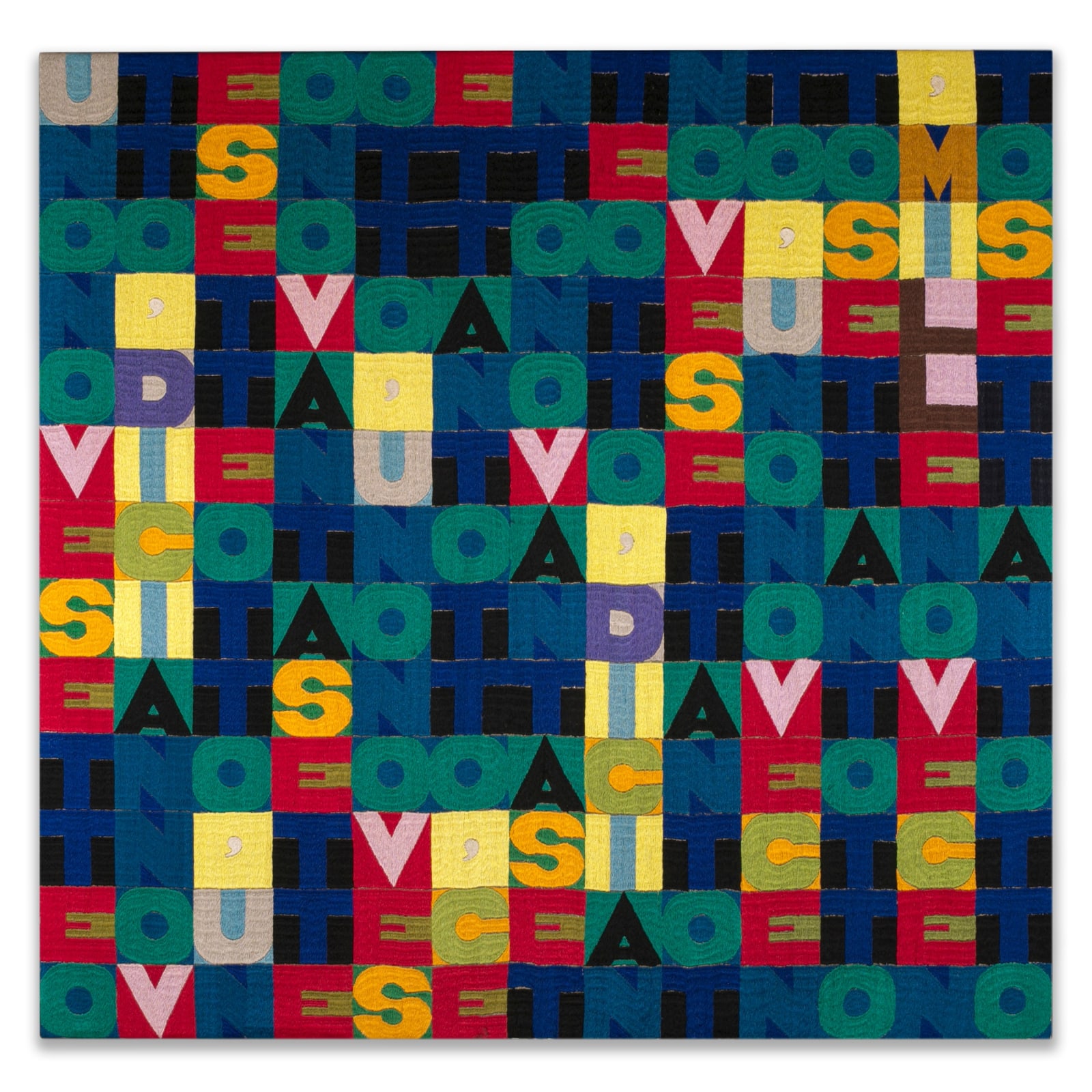

Alighiero Boetti Italian, 1940-1994
Senza Titolo (Uno Nove Sette Otto), 1978
Embroidery
94 x 94 cm; (37 x 37 in.)
Copyright The Artist
Alighiero Boetti is celebrated for his embroidered tapestries – Arazzi, Mappe and Tutto – conceptual collaborations that resulted in aesthetically powerful works of art that encapsulated many of the ideas...
Alighiero Boetti is celebrated for his embroidered tapestries – Arazzi, Mappe and Tutto – conceptual collaborations that resulted in aesthetically powerful works of art that encapsulated many of the ideas he sought to explore in his lifetime, such as pictorial language, authorship, wordplay, order and disorder, dualities, and elements of chance achieved through the collaborative process. Boetti first traveled to Afghanistan in 1971, where he became enamored with the landscape and rich cultural traditions, and would spend much of the decade working and collaborating there. He commissioned his mosaic-like word grids and geopolitical maps to be embroidered by local Afghan craftswomen, first in Kabul, and following the Soviet invasion of 1979, in Peshawar, Pakistan, where many had taken refuge. The Arazzi are vividly coloured embroideries comprised of letters arranged in grids of varying sizes, typically read vertically, to reveal witty or enigmatic aphorisms, in Italian, underscoring the artist’s approach to language that was both playful and cerebral.
Senza Titolo (Uno Nove Sette Otto), 1978, is large-scale Arazzi rendered in a resplendent array of vivid, jewel-toned colours. Read vertically, Boetti ingeniously and playfully spells out the date ‘1978’ in varying iterations, from ‘nineteen seventy-eight’ to ‘one nine seven eight’ and so forth. The year 1978 was particularly auspicious as it marked the time period just before the war in Afghanistan and consequently the shift in production of Boetti’s tapestries to Peshawar, along with the Afghan craftswomen who became refugees there.
Senza Titolo (Uno Nove Sette Otto), 1978, is large-scale Arazzi rendered in a resplendent array of vivid, jewel-toned colours. Read vertically, Boetti ingeniously and playfully spells out the date ‘1978’ in varying iterations, from ‘nineteen seventy-eight’ to ‘one nine seven eight’ and so forth. The year 1978 was particularly auspicious as it marked the time period just before the war in Afghanistan and consequently the shift in production of Boetti’s tapestries to Peshawar, along with the Afghan craftswomen who became refugees there.

